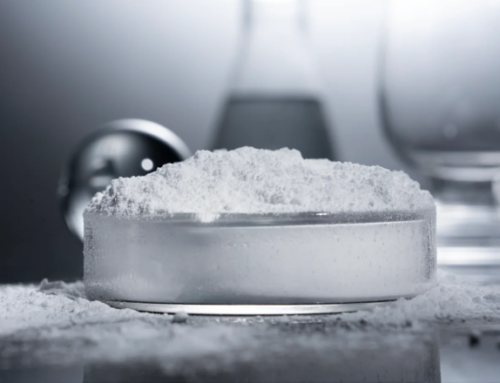Hazardous chemicals refer to highly toxic chemicals and other chemicals that have the properties of poisoning, corrosion, explosion, combustion, combustion, etc., and are harmful to human body, facilities, and the environment.
1.The characteristics of hazardous chemicals
(1) Explosive, flammable, toxic, corrosive, radioactive and other properties.
(2) In the process of production, transportation, use, storage and recovery, it is easy to cause casualties and property damage.
2.Safe conditions for the storage of hazardous chemicals
(1) Avoid direct sunlight, away from fire, heat source, power source, no spark.
(2) Black gunpowder and explosive compounds are stored in special warehouses.
(3) Flammable gas, non-flammable gas and toxic gas are stored separately.
(4) Flammable liquids can be stored in the same warehouse; But methanol, ethanol, acetone, etc. should be stored exclusively.
(5) Flammable solids can be stored in the same warehouse; But hair hole agent H and acid or acidic goods are stored separately; Metal powders such as cellulose nitrate ester, safety matches, red phosphorus and phosphorus sulfide, and aluminum powder should be stored separately.
(6) Yellow phosphorus, hydrocarbon-based metal compounds, vegetable oil products must be stored separately.
(7) Oxidants and organic peroxides First and second inorganic oxidants and first and second organic oxidants must be stored separately, but ammonium nitrate, chlorate, permanganate, nitrite, sodium peroxide, hydrogen peroxide, etc., must be stored separately. In case of wet flammable goods, use a special warehouse storage.
3.Prevent chemical accidents
(1) Understand the characteristics of the hazardous chemicals used, do not operate blindly, and do not use in violation of regulations.
(2) Take good care of the hazardous chemicals around you, so that: complete labels, sealed storage; Avoid heat, light and fire.
(3) Do not store dangerous chemicals in the room.
(4) Do not carry dangerous chemicals by boat or car.
(5) Prevent indoor accumulation of high concentration of flammable and explosive gas.
4.What should I do in the event of a sudden explosion of hazardous chemicals
(1) Quickly lie down in the direction of the explosion shock wave, face down, head down, and preferably lie on your side by the ditch where there is a ditch. If indoors, you can avoid under a sturdy table and chair.
(2) When avoiding the explosion shock wave, open your mouth to avoid the powerful shock wave generated by the explosion to puncture the eardrum and cause permanent deafness.
(3) Hold your breath after the explosion, avoid inhaling toxic and harmful gases generated by the explosion, and keep a low posture when escaping. No running around, no yelling. Cover your mouth and nose with a towel or clothes.
(4) Check the injury of the injured, and quickly remove the dust and sand in the injured trachea to prevent suffocation. Hemostasis, bandaging, fixation, cardiopulmonary resuscitation and other rescue measures were taken for the injured.
5.First aid for hazardous chemical injuries
(1) On-site first aid for poisoning
① For those who are poisoned by harmful gas inhalation, the patient should be immediately removed from the infected area, moved to a place with fresh air, removed foreign bodies in the patient’s mouth and nose, untangled clothes, and kept warm. In severe cases, oxygen or artificial respiration should be given.
② For those who are exposed to skin and mucous membrane contamination, leave the source of the poison immediately, remove the equipment worn by the victim, remove the contaminated clothing, and wash the body surface with clean water.
③ For food poisoning, use emesis, gastric lavage, drainage and other methods to eliminate the poison, the site can be fingers, feathers, chopsticks, tongue depressor touch the patient’s pharynx, so that it will vomit out the poison. However, strong acid and alkali poisoning or unconscious people should not use.
④ If there is poison in the eyes, rinse them with normal saline or water quickly. Rinse with 2% sodium bicarbonate solution for acidic poisons and 3% boric acid solution for alkaline poisons. When there is no liquid, rinse with lukewarm water.
(2) Choking scene first aid
① Get out of the bad environment, loosen the tight clothes on the patient, and make the respiratory tract smooth.
② Gently tap the patient’s back or use your fingers to remove secretions and foreign bodies from the patient’s mouth, nose, and respiratory tract.
③ Artificial respiration or mask oxygen inhalation.
④ External chest cardiac compression to establish venous access.
(3) On-site first aid for burns
① When burns occur, the patient’s clothes should be quickly removed (cut along the seam) and “wound cooling therapy” should be performed.
② Do not break the blisters arbitrarily. Cover the wound surface with a cleaning cloth to avoid contamination of the injured surface.
③ When the patient is thirsty, he can take light saline or burn drink orally.
(4) On-site first aid for chemical eye burn
① Rinse quickly with clean water on site. Use running water to break open the eyelid while rinsing, and thoroughly rinse the chemicals wrapped in the eyelid.
② If there is no washing equipment on site, bury the head in the cleaning basin, open the eyelids, and let the eyeballs rotate back and forth for washing. If calcium carbide, quicklime particles into the eyes, should be dipped in paraffin oil or vegetable oil cotton swab to remove particles, and then rinse with water.
Safety production is only a starting point, there is no end, we must continue to learn safety knowledge, strengthen safety awareness, summarize the lessons of the accident, establish a sense of danger, and implement the main responsibility, in order to avoid more accidents and tragedies.
Article from M&J International Trading Co., Ltd





